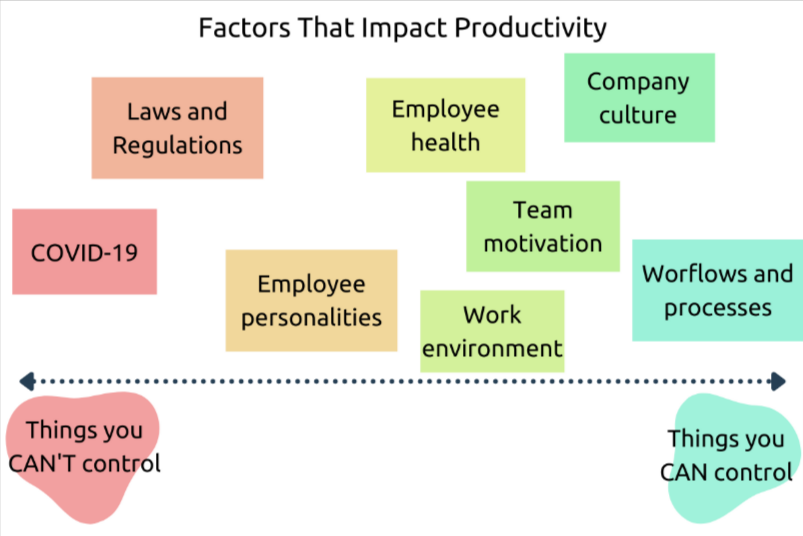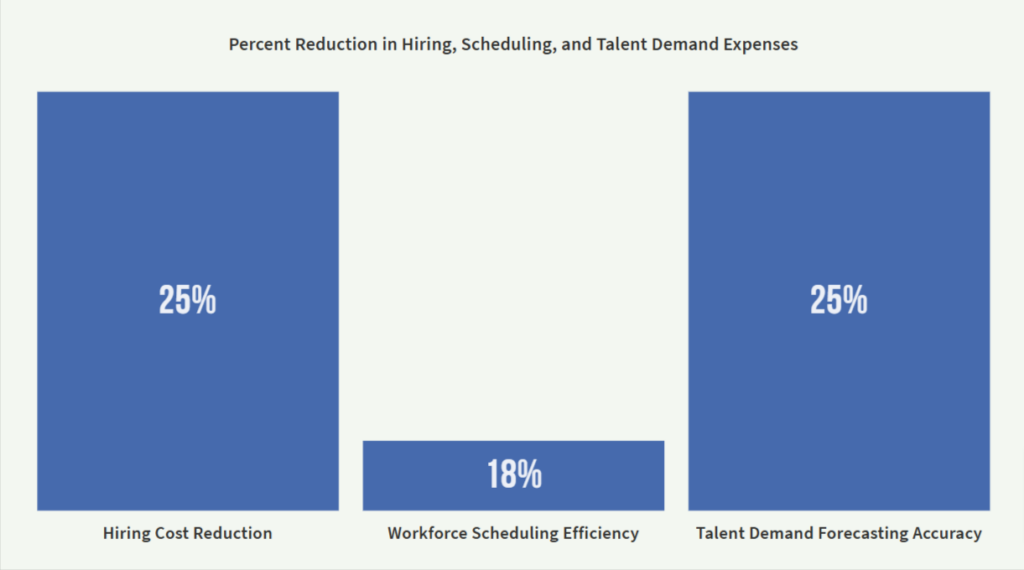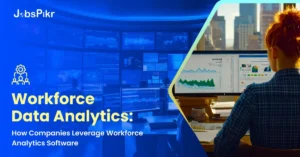In today’s business landscape, which is dependent on data analysis, workforce data analytics is changing how organizations manage talent, optimize workforce productivity, and inform decision making. Organizations now track employee effectiveness, forecast staffing requirements, and control employee-related expenditures with the aid of software analytics packages. To facilitate human resources and workforce planning, integration of workforce analytics is very crucial in meeting business objectives for organizational success.
Deloitte’s report points to 69 percent of organizations utilizing workforce analytics claiming better workforce planning and efficiency of costs, while firms using HR-driven strategies have lower turnover by 25 percent. Unlike other functions, businesses must utilize workforce data analytics for agility and responsiveness because the advantages are eye-catching.
This article discusses the importance of workforce data analytics, the functionalities of workforce analytics software, and how organizations can leverage workforce intelligence for effective HR management and business performance improvement.
What Is Workforce Data Analytics? and Why It Matters?
Workforce data analytics comprises the process of collecting employee information and interpreting it in a way that aids the optimization of workforce strategies. It provides insight into hiring trends, productivity, employee engagement and labor expenses.

Some components of workforce analysis include:
- Talent Acquisition Analysis Breakdown: Evaluation of recruitment trends and success rates.
- Employee Performance Assessments: Measuring productivity and efficiency.
- Retention & Turnover Attrition Analysis: Assessing risks around turnover and retention.
- Benefits & Compensation Analysis: Providing market competitive wages.
- Forecasting Workforce Demand: Anticipating prospective recruitment requirements due to organizational growth.
According to a study carried out by PwC, companies using workforce data analytics improve HR operations by 30% and save up to 20% in recruitment spending.
Must-Have Features and Benefits of Workforce Analytics Software
In response to the increasing intricacies of the workforce, businesses are now resorting to workforce analytics software to automate the processing of HR data, monitor labor market activities, and assist in strategic decision making.
Key Features of Workforce Analytics Software and Their Benefits
1. Real-Time HR Data Insights
Newer tools for workforce analytics come equipped with dashboards which offer real time data access enabling the HR department to profile employees, identify skill deficits, and monitor workforce trends and accomplishments without delay.
2. Predictive Hiring Analytics
AI-powered analytics enable an organization to predict hiring needs and help eliminate staffing bottlenecks effectively, thus enhancing the efficiency of the talent pipeline.
3. Performance & Productivity Monitoring
HR managers can examine the interrelation of workforce engagement, project effectiveness, and work output levels to best allocate workforce resources and training programs to achieve optimal results.
5. Cost Optimization & Budget Planning
Workforce Analytics Software allows a firm to manage staff expenditure by adjusting workforce supply, overtime hours, and remuneration policies and therefore help eliminate inefficient spending on staff.
Top Benefits of Workforce Analytics Software for HR
- Enhanced Efficiency of Recruitment: Organizations analyze the use of workforce analytics software and realize that their time-to-hire has reduced by 35%.
- Lower Employee Turnover: With analytics powered strategies, firms experience a turnover reduction of employees by 25%.
- Enhanced Productivity of Employees: Companies utilizing real time analysis In business operations enhances employee performance by an average of 20%.
- Reduced Staffing Expenses: Firms utilizing workforce analytics were able to lower employee staffing expenses by 15-20%.
As reported by Gartner, firms with integrated workforce analytics software have been said to obtain twice as efficient HR operations when compared to organizations lacking such analytics decision-making tools.
How Businesses Use Workforce Data to Optimize Productivity & Cost Efficiency?
Workforce data analytics has become important in modern-day operations because organizations need to be cost-effective, productive, and efficient. With real time metrics analysis, businesses can pinpoint inefficient processes, enhance employee output, and forecast workforce requirements. Through strong data, HR leaders can strategize in ways that target aligning an organization’s workforce with business goals, thus averting wastage and bolstering success.
Improving Workforce Productivity through Analytics
Employers use HR strategies with workforce data analytics integration. This allows employers to see productivity patterns, identify gaps, and take informed actions. With workforce insights, HR managers can:
- Analyze employee and team performance metrics for improved performance.
- Monitor employee engagement levels and satisfaction to curtail burnout.
- Shift the workforce to ensure operational productivity and efficiency.
McKinsey reported that a company using analytics for its workforce estimated a productivity increase of 20-30%. This is because the HR departments are able to make data-driven decisions.

Workforce Analytics for Cost Reduction
Organizations are also utilizing workforce analytics software for cost of labor while still maintaining efficiency. Money-saving benefits are:
- Reducing hiring costs by automating candidate screening and workforce planning.
- Improving workforce scheduling to reduce overtime pay and inefficiencies.
- Forecasting talent demand to prevent talent shortages and last-minute hiring expenses.
According to a PwC, firms leveraging predictive workforce analytics can cut their operational spend by 18% while simultaneously improving their workforce planning accuracy by 25%.

JobsPikr’s Workforce Analytics Capabilities and Integration with HR Tools
As a business identity, JobsPikr’s workforce analytics offers a powerful solution to enhance the HR decision making process. Businesses can refine their hiring processes, salary benchmarking, and future workforce demands prediction by seamlessly integrating real-time market data with workforce planning tools. By streamlining existing HR systems, JobsPikr guarantees that accurate and actionable insights vital to effective workforce management and long term talent strategies are provided to the teams in HR.
How JobsPikr Supports Workforce Data-Driven HR Decision-Making?
JobsPikr is a leading provider of real-time workforce analytics, enabling businesses to make data-driven HR decisions with precision. By integrating JobsPikr’s analytics into HR workflows, companies can:
- Analyze labor market trends to improve recruitment planning.
- Benchmark salaries and compensation based on industry-wide data.
- Forecast workforce demand to stay ahead of hiring needs.
- Enhance workforce allocation by tracking productivity and staffing trends.
Real-World Applications of JobsPikr’s Workforce Analytics
- Tech Industry: A software company used JobsPikr’s analytics to streamline hiring, reducing recruitment costs by 30% and improving hiring efficiency.
- Healthcare Sector: A hospital network leveraged workforce data to fill medical roles 40% faster, reducing patient care disruptions.
- Retail Industry: A multinational retailer optimized staffing with workforce analytics, leading to a 25% reduction in labor expenses.
- Manufacturing Sector: A manufacturing firm integrated JobsPikr’s workforce intelligence, reducing workforce planning errors by 35% and enhancing labor cost management.
With the integration of JobsPikr’s workforce analytics software, HR departments no longer need to use their best estimates and can take decisive, fact-based actions regarding the workforce.
The Future of Workforce Data Analytics
As companies progressively adopt workforce analytics, new developments suggest a movement towards more AI-powered workforce solutions and immediate access to real-time analytics. Noteworthy changes in workforce data analytics include:
- Augmented AI Integration in HR Strategy: Some advanced systems will utilize AI to optimize hiring and employee allocation processes.
- Increased Adoption within HR Software Bundles: Corporations will link workforce analytics with HRIS systems (Human Resource Information Systems) for streamlined workforce supervision.
- Instant Performance Analytics for Employees: Companies will utilize real-time employee analytics dashboards for enhanced productivity.
- Sophisticated Diversity Analytics among Employees: Employee analytics systems will also enhance effective DEI (Diversity, Equity, and Inclusion) hiring campaigns.
According to a study conducted by SHRM, more than 75% of businesses will use AI-powered workforce analytics software for employee optimization and planning by 2025.
Conclusion
Business analytics is revolutionizing the way companies make human resource decisions, hire employees, and manage their staff. With the help of workforce analytics software, companies are able to enhance productivity, automate recruitment processes, and lower business costs.
Firms that adopt datacentric workforce strategies improve their human resource operational effectiveness and gain a competitive advantage by making better talent procurement, retention, and compensation strategies. Companies that employ AI powered workforce analytics systems will, for the foreseeable future, enjoy increased efficiency and adaptability in response to real-time workforce intelligence.
If your HR department is willing to adopt data driven workforce analysis, you can rely on JobsPikr for advanced workforce intelligence tools that help organizations make rational and evidence based human resource choices.Sign up on JobsPikr today to access real-time workforce analytics and transform your workforce management strategies!



